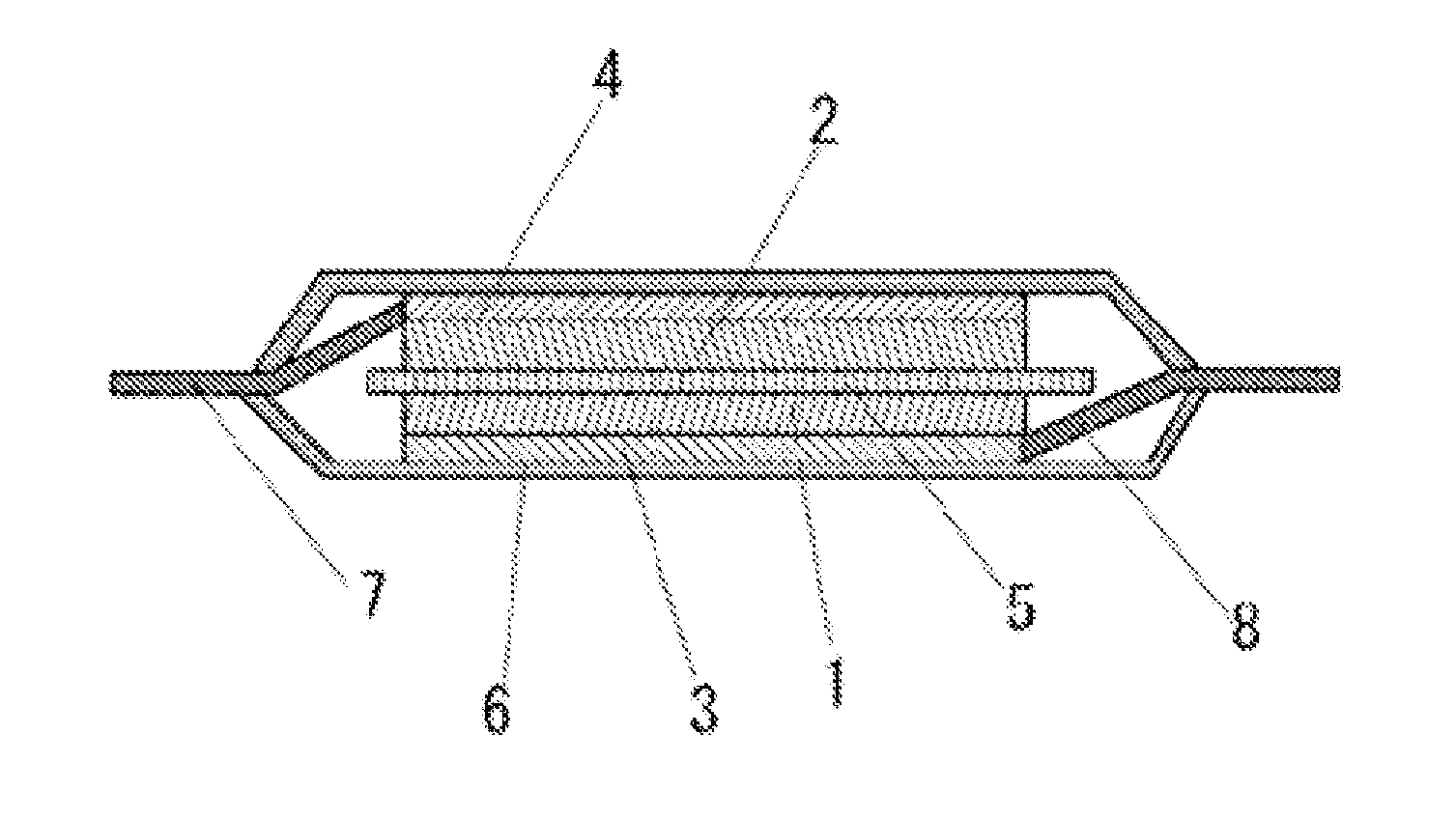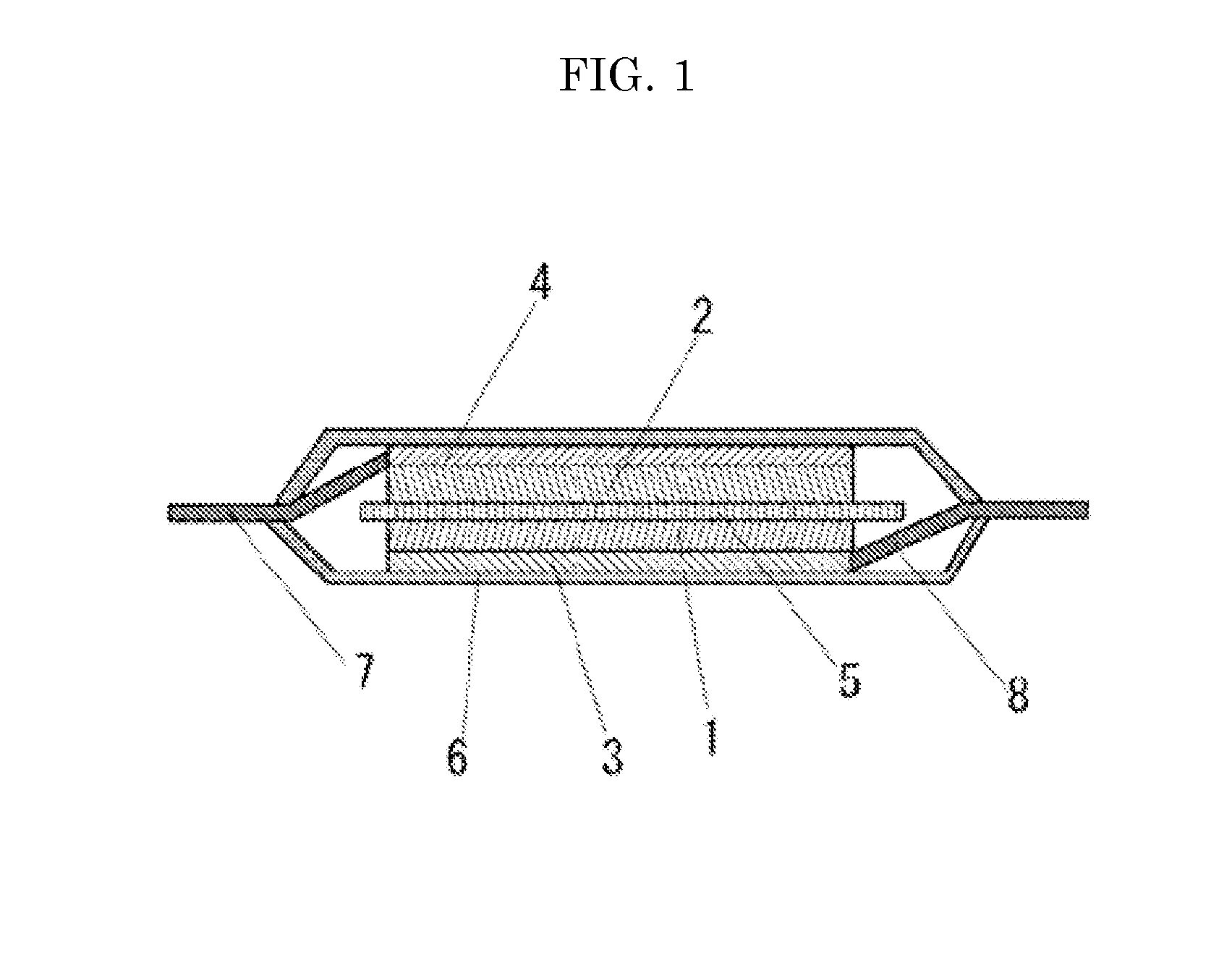Lithium secondary battery
a secondary battery and lithium ion technology, applied in batteries, non-aqueous electrolyte cells, sustainable manufacturing/processing, etc., can solve the problems of a negative electrode of the 5-v class, a drop in capacity, fluorinated solvent and a sulfone compound, etc., to suppress gas evolution and improve the effect of a cycle-long capacity drop
- Summary
- Abstract
- Description
- Claims
- Application Information
AI Technical Summary
Benefits of technology
Problems solved by technology
Method used
Image
Examples
example 1
Production of a Positive Electrode
[0138]First, powders of MnO2, NiO, Li2CO3, and Ti3O3 were weighed so as to be the intended composition ratio, and were crushed and mixed. Subsequently, the mixed powder was calcined at 750° C. for 8 hours to produce LiNi0.5Mn1.37Ti0.13O4. This positive electrode active material was confirmed to have a nearly single-phase spinel structure. The produced positive electrode active material and a carbon black which is an electric conductivity imparting agent were mixed, and the mixture was dispersed in a solution of polyvinylidene fluoride (PVDF) which is dissolved in N-methylpyrrolidone and serves as a binder to thereby prepare a positive electrode slurry. The mass ratio of the positive electrode active material, the electric conductivity imparting agent, and the positive electrode binder was 91 / 5 / 4. The positive electrode slurry was uniformly applied on the both sides of a current collector formed of Al. Subsequently, the current collector was dried in...
examples 12 to 40
[0152]Batteries were produced as in Example 1 except that an electrolyte solution containing a solvent having a composition ratio of the fluorinated ether / sulfone compound / carbonate ester compound shown in Table 2 was used. An electrolyte solution further containing additives shown in Table 2 was used in Examples 31 to 40. The results of evaluation carried out as in Example 1 are shown in Table 2. As with Examples 12 to 40, even if the composition ratio and types of the fluorinated ether / sulfone compound / carbonate ester compound were changed, satisfactory cycling characteristics were provided. Further addition of the additives made the cycling characteristics satisfactory. It should be noted that, in examples in which two or more carbonate ester compounds are used in Table 2, the figures in the parentheses represent the volume ratio of these. Alternatively, in examples in which the additives are used, the figures in the parentheses represent the content of the additive (% by mass) i...
examples 41 to 52
[0153]Batteries were produced as in Example 1 except that an electrolytic solvent further containing a fluorinated phosphate ester or fluorinated carboxylate ester in addition to the fluorinated ether / sulfone compound / carbonate ester compound and an electrolyte solution mixed with various additives as shown in Table 3 were used. The results of evaluation carried out as in Example 1 are shown in Table 3. Satisfactory cycling characteristics and greatly suppressed gas evolution were achieved by comprising fluorinated phosphate ester or fluorinated carboxylate ester in the electrolyte solution as in Examples 41 to 52. Additionally, inclusion of the various additives in the electrolyte solution achieved these effects. The figures in the parentheses represent the volume ratio of these in the non-aqueous electrolytic solvent. In examples in which an additive is used, the figures in the parentheses represent the content of the additive (% by mass) in the electrolyte solution.
TABLE 3Non-aqu...
PUM
| Property | Measurement | Unit |
|---|---|---|
| temperature | aaaaa | aaaaa |
| size | aaaaa | aaaaa |
| energy density | aaaaa | aaaaa |
Abstract
Description
Claims
Application Information
 Login to View More
Login to View More - R&D
- Intellectual Property
- Life Sciences
- Materials
- Tech Scout
- Unparalleled Data Quality
- Higher Quality Content
- 60% Fewer Hallucinations
Browse by: Latest US Patents, China's latest patents, Technical Efficacy Thesaurus, Application Domain, Technology Topic, Popular Technical Reports.
© 2025 PatSnap. All rights reserved.Legal|Privacy policy|Modern Slavery Act Transparency Statement|Sitemap|About US| Contact US: help@patsnap.com



